Disclosure: This article contains affiliate links. We may earn a commission from purchases at no extra cost to you, which helps our travel content.
As I stepped out of my modest homestay into Jakarta's sweltering morning heat, the contrast couldn't have been more striking. Here I was, an Australian-raised son of Indian immigrants, exploring Indonesia's capital where centuries of Dutch colonial influence have left an indelible architectural footprint. Growing up in Melbourne, I developed a fascination with buildings that tell stories of cultural collision—perhaps because my own identity exists at such an intersection. As a dermatologist by profession, I'm trained to observe patterns and details that others might miss, a skill that translates surprisingly well to architectural appreciation. Jakarta offers a remarkable opportunity to witness how European design principles adapted to Southeast Asian conditions, creating a unique architectural heritage that deserves more recognition than it typically receives. Join me on this budget-friendly walking tour where we'll explore the remnants of the Dutch East Indies era—a journey through time that costs little but offers rich rewards for the culturally curious.
Kota Tua: The Historic Heart of Old Batavia
My exploration began in Kota Tua (literally 'Old Town'), the original Dutch settlement formerly known as Batavia. Emerging from Kota Station, I was immediately transported to what felt like a European square dropped incongruously into Southeast Asia. Fatahillah Square forms the heart of this district, surrounded by imposing colonial structures that have withstood both the tropical climate and the march of time.
The centerpiece is the former Stadhuis (City Hall), now housing the Jakarta History Museum. Built in 1710, this stately building exemplifies Dutch colonial architecture with its symmetrical façade, large windows designed to maximize airflow (crucial before air conditioning!), and distinctive mansard roof. For just 5,000 IDR (about $0.35 USD), you can explore its interior, which houses artifacts from Jakarta's evolution from Dutch trading post to modern metropolis.
As a temple enthusiast who's explored religious structures across Asia, I found myself appreciating these secular buildings with a similar eye for symbolic details and adaptation to local conditions. The Dutch colonizers had to modify their traditional architectural styles to accommodate Jakarta's punishing heat and humidity, creating hybrid designs that incorporated deeper verandas, higher ceilings, and strategic cross-ventilation.
Wandering the square, I stopped to sketch the architectural details in my travel journal, which I've found perfect for quick architectural drawings with its quality paper that prevents ink bleed-through even in humid conditions. The local vendors quickly noticed my interest, with one elderly gentleman approaching to share stories of the square's history that no guidebook had mentioned.
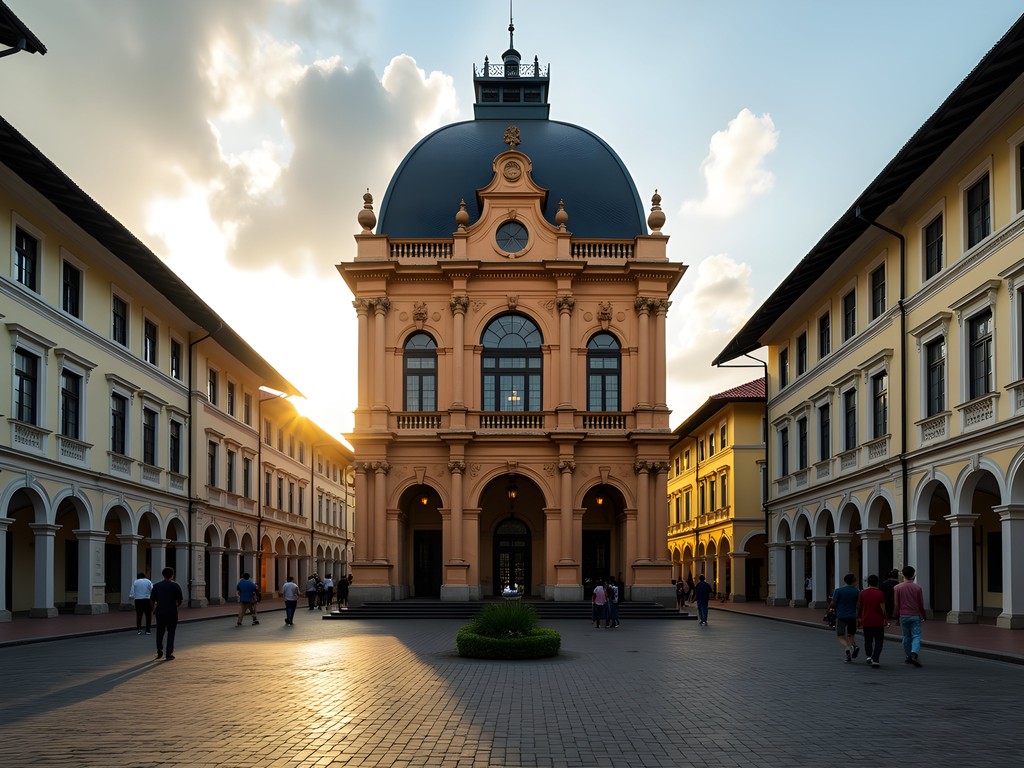
💡 Pro Tips
- Visit early morning (before 9am) to avoid both crowds and the worst of the day's heat
- The museums around Fatahillah Square offer a combined ticket option that saves about 30% compared to individual entries
- Bring small Indonesian currency denominations as many smaller sites don't accept cards or have change
Bridges, Canals, and the Dutch Waterways
Perhaps nothing demonstrates the Dutch influence on Jakarta more clearly than its network of canals. As someone who grew up in Melbourne with its distinctly British colonial imprint, I found Jakarta's canal system fascinating—it's essentially Amsterdam transported to the tropics, though with admittedly less maintenance over the centuries.
The Kali Besar canal was once the main waterway of Batavia, lined with the homes and offices of wealthy Dutch merchants. Today, walking along its banks provides a glimpse into how the colonizers attempted to recreate their homeland's water management systems in a completely different environment. The Dutch essentially tried to impose their water-centric urban planning on Jakarta's tropical landscape—with mixed results that continue to affect the city's notorious flooding issues today.
The Jembatan Kota Intan (Drawbridge) is a particular highlight, a recently restored structure originally built in 1628. As Jakarta's last remaining Dutch drawbridge, it represents the engineering prowess that the colonizers brought to the East Indies. During my visit, I was lucky enough to meet a local historian who, upon learning of my interest, showed me historical photographs of how the area looked during colonial times.
The contrast between these old images and today's reality is striking. Where once European-style buildings lined pristine canals, now much of the original architecture has been lost to time, neglect, or redevelopment. Yet enough remains to piece together this fascinating architectural story.
I spent hours photographing the remaining structures with my travel camera, which I've found ideal for travel photography with its compact size but exceptional image quality, particularly in challenging lighting conditions like Jakarta's harsh midday sun or the dimly-lit interiors of historic buildings.
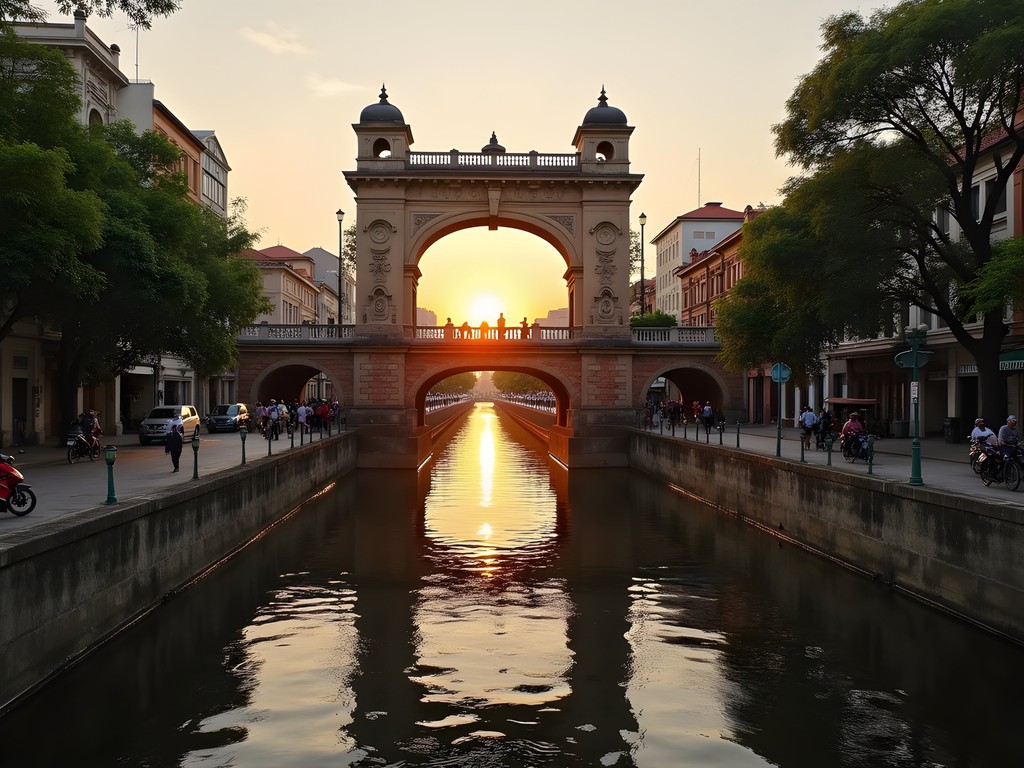
💡 Pro Tips
- The area around Kali Besar is being gradually restored—check for newly opened sections
- Bring a wide-angle lens if you're into photography to capture both sides of the canals
- Local boat tours occasionally operate on weekends—inquire at the Jakarta Good Guide kiosk in Fatahillah Square
Religious Architecture: Where East Meets West
As someone who's documented temples across Southeast Asia, I find Jakarta's religious buildings particularly fascinating for how they represent the intersection of European architectural traditions with local cultural and climatic demands.
The Gereja Sion (Zion Church), built in 1695, is Jakarta's oldest surviving church and a masterclass in colonial adaptation. Unlike the grand Gothic cathedrals of Europe, this Portuguese-influenced structure features thick walls for heat insulation and large windows positioned to maximize air circulation. The church remains active today, and during my Sunday visit, I was warmly welcomed by the congregation who proudly shared the building's history.
Nearby stands the Jakarta Cathedral, a neo-gothic structure completed in 1901 that more closely resembles European church architecture. Its twin spires create one of the most recognizable silhouettes in Jakarta's skyline. What struck me was how the interior design incorporated subtle local elements—tropical hardwoods and motifs that blend seamlessly with the otherwise European aesthetic.
Perhaps most interesting is the Masjid Luar Batang, one of Jakarta's oldest mosques, located just north of Kota Tua. Though not strictly Dutch colonial architecture, it represents how local Islamic architectural traditions continued and evolved during the colonial period. The mosque's design incorporates both Middle Eastern influences and adaptations to the tropical climate, with wide, covered walkways and natural ventilation.
As a temple enthusiast who's photographed religious structures across Asia, I was particularly drawn to the cultural synthesis evident in these buildings. They tell a story of how religious architecture served as both an expression of power and a practical adaptation to local conditions.
My exploration of these sites was greatly enhanced by the detailed historical context provided in my Indonesia guidebook, which offers excellent architectural walking tours with historical context that most online resources miss.
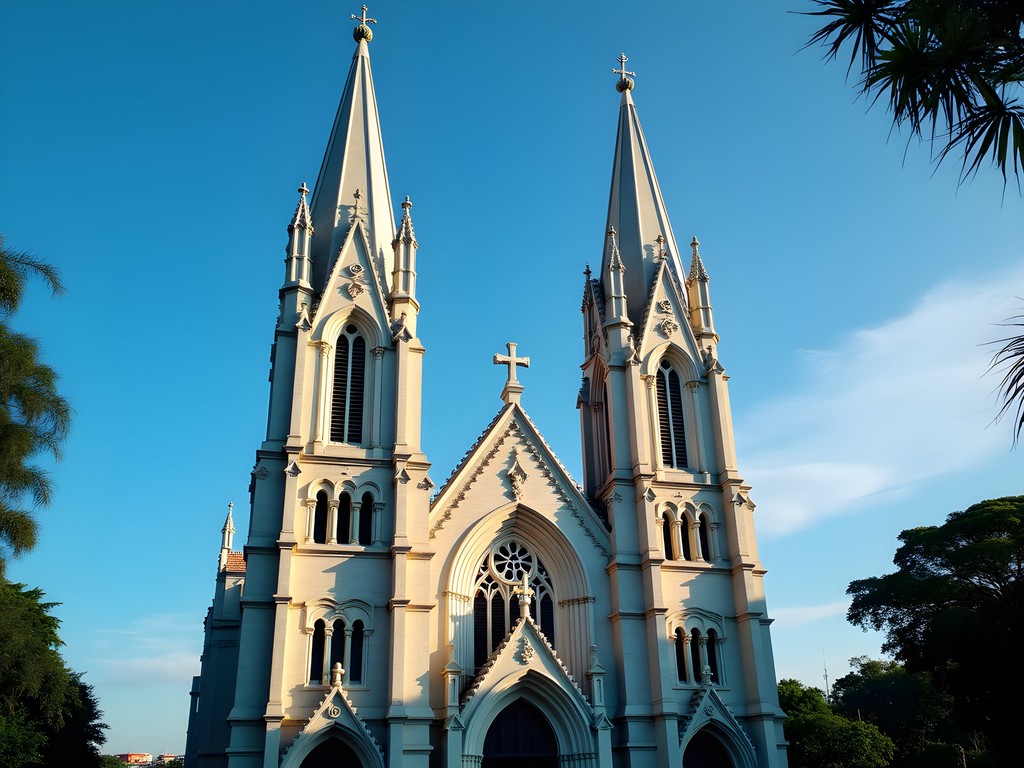
💡 Pro Tips
- Respect dress codes when visiting religious sites—carry a light scarf or sarong to cover shoulders or legs when needed
- Visit the Jakarta Cathedral and Istiqlal Mosque together as they symbolize Indonesia's religious harmony, standing directly across from each other
- Many religious sites close to tourists during prayer times—check schedules in advance
Adaptive Architecture: Dutch Tropical Style
What fascinates me most about Jakarta's colonial buildings is how they represent an architectural compromise between European design principles and tropical necessity. As both a dermatologist and architecture enthusiast, I'm acutely aware of how environmental conditions shape both our bodies and our buildings.
The Dutch colonial style evolved over centuries as the Europeans gradually accepted that their traditional architecture needed significant modification to be habitable in Jakarta's climate. This evolution is visible in buildings from different periods across the city.
Early colonial structures often featured thick walls for insulation against heat, high ceilings to allow hot air to rise, and overhanging eaves to protect against both sun and torrential rain. Later buildings incorporated deep verandas, louvered windows, and interior courtyards that created natural ventilation pathways—essentially passive cooling systems that predated electricity by centuries.
One excellent example is the Bank Indonesia Museum (formerly De Javasche Bank), which beautifully demonstrates these adaptations. The building's imposing neoclassical façade projects European power, but its interior design shows sophisticated climate adaptation with central courtyards and covered galleries that promote air circulation.
Another highlight is the former Batavian Society of Arts and Sciences building (now the National Museum of Indonesia), which features a Greek-inspired portico but incorporates covered walkways and strategic window placement for ventilation. The museum houses an impressive collection of artifacts, but the building itself is equally worthy of study.
During my exploration, I found myself constantly reaching for my water bottle in Jakarta's unrelenting heat. My insulated water bottle proved invaluable, keeping water cold for hours even in tropical conditions—essential for long days of architectural exploration when staying hydrated is crucial.
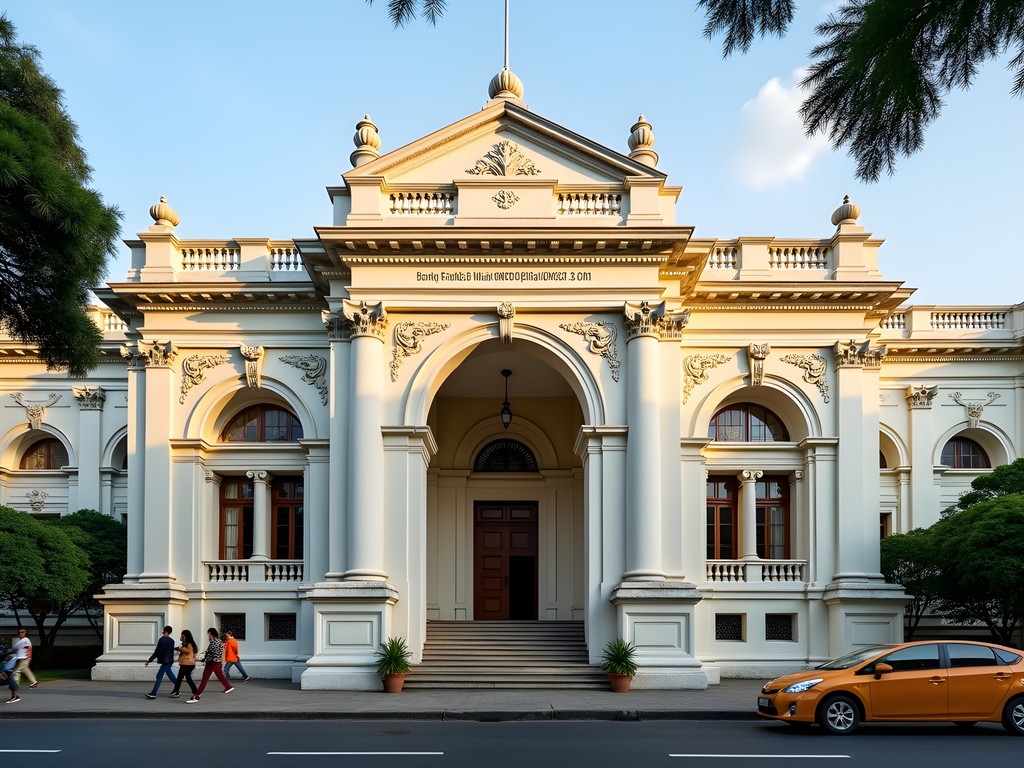
💡 Pro Tips
- Look for the architectural details that demonstrate climate adaptation—overhanging eaves, shuttered windows, and interior courtyards
- The Bank Indonesia Museum offers free guided tours in English on weekdays that explain the building's architectural significance
- Visit buildings in the late afternoon when the lighting brings out the architectural details and temperatures are more comfortable
Budget-Friendly Tips for Colonial Architecture Exploration
As someone who's mastered the art of traveling on a mid-range budget while maximizing experiences, I've developed several strategies for exploring Jakarta's colonial architecture economically.
First, timing is everything. Many museums offer free admission on specific days or during certain hours. The Jakarta History Museum waives its already modest entrance fee on the last Sunday of each month, while the National Museum offers free entry on Sundays between 8:00-15:00. By planning your itinerary around these opportunities, you can significantly reduce costs.
Second, consider investing in the Jakarta Good Guide walking tours. At around 150,000-350,000 IDR ($10-25 USD), these guided explorations may seem like a splurge for budget travelers, but the depth of knowledge and access to buildings normally closed to the public make them exceptional value. I joined their Kota Tua Heritage Walk and gained insights I would have completely missed exploring independently.
Third, accommodation strategy matters. I stayed in a simple guesthouse in Jalan Jaksa area, positioning myself between Kota Tua and central Jakarta. This neighborhood offers basic but clean rooms for 150,000-250,000 IDR ($10-17 USD) per night, significantly cheaper than downtown hotels while providing easy access to public transportation.
Speaking of transportation, Jakarta's TransJakarta bus system is remarkably efficient and incredibly affordable at just 3,500 IDR (about $0.25 USD) per journey regardless of distance. The Corridor 1 route connects directly to Kota Tua, making it easy to access the colonial district without expensive taxis.
For meals, I alternated between street food (delicious and incredibly cheap at 15,000-30,000 IDR/$1-2 USD per meal) and the colonial-era Café Batavia on Fatahillah Square. While pricier than street food, Café Batavia's atmospheric colonial setting and walls covered with historical photographs make it worth the splurge for at least one meal. Their weekday lunch specials are relatively affordable at around 100,000 IDR ($7 USD).
For longer explorations, I relied heavily on my daypack, which comfortably carried my water bottle, camera gear, guidebook and rain shell—essentials for Jakarta's unpredictable weather and long days of walking.
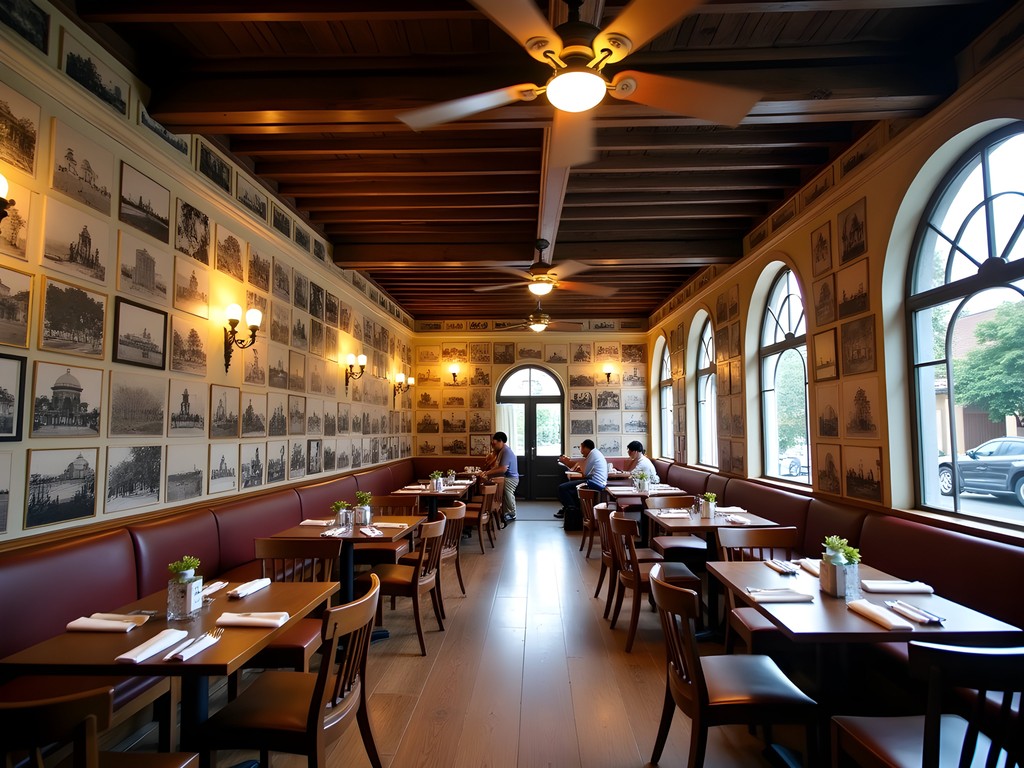
💡 Pro Tips
- The TransJakarta bus card can be purchased at major stations and topped up at convenience stores—well worth getting for multiple days of exploration
- Many colonial buildings are still government offices with restricted access—visit on weekends when some offer limited public tours
- Street food near Fatahillah Square is significantly more expensive than identical dishes a few blocks away—walk 5 minutes in any direction for better prices
Final Thoughts
As I concluded my architectural journey through Jakarta's colonial past, I found myself reflecting on how buildings tell stories of cultural exchange—sometimes harmonious, often complicated. These structures stand as physical reminders of Indonesia's complex history with colonialism, yet they've been reclaimed and recontextualized in the modern Indonesian narrative. For travelers willing to look beyond the chaos of Jakarta's traffic and urban sprawl, the architectural heritage offers profound insights into how European and Indonesian influences collided and ultimately synthesized. Whether you're an architecture enthusiast, history buff, or simply curious about cultural intersections, Jakarta's Dutch colonial buildings provide a fascinating lens through which to view the past. And for budget-conscious travelers like myself, few destinations offer such rich architectural exploration at such modest costs. So pack your walking shoes, prepare for the heat, and step back in time through Jakarta's colonial doorways—where history is written not just in books, but in brick, stone, and the enduring tropical adaptations that tell a story of two worlds meeting.
✨ Key Takeaways
- Jakarta's colonial architecture represents a fascinating adaptation of European design principles to tropical conditions
- Budget travelers can explore most colonial sites for minimal cost, especially using free museum days and public transportation
- The architectural evolution shows how Dutch colonizers gradually adapted their building styles to local climate realities
- Many buildings serve new purposes in independent Indonesia while preserving their historical significance
📋 Practical Information
Best Time to Visit
year-round, but May-September offers less rainfall
Budget Estimate
$30-50 USD per day including accommodation, food, and entrance fees
Recommended Duration
2-3 days for comprehensive exploration
Difficulty Level
Moderate Due To Heat, Traffic, And Urban Navigation
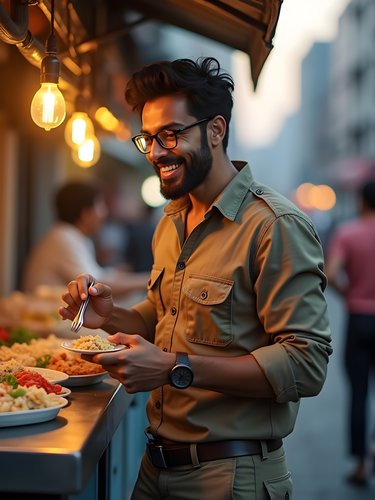
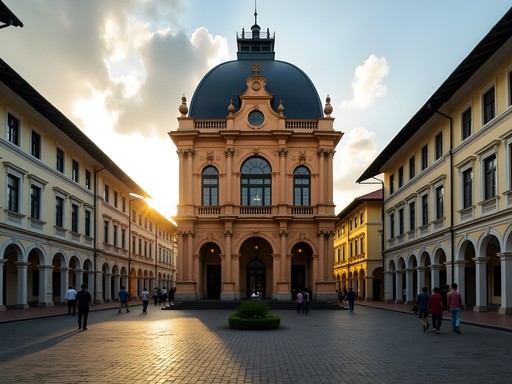

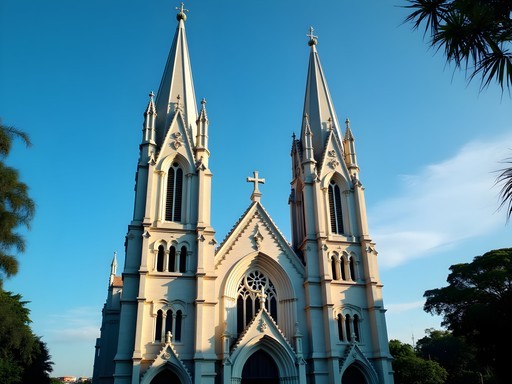

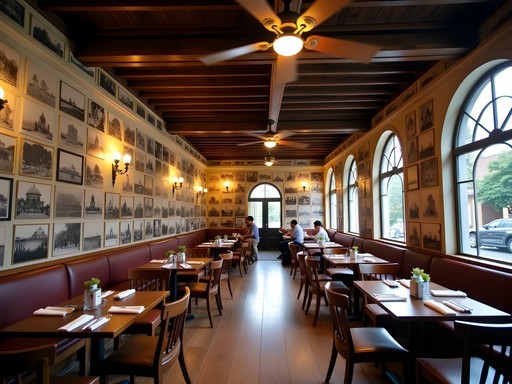


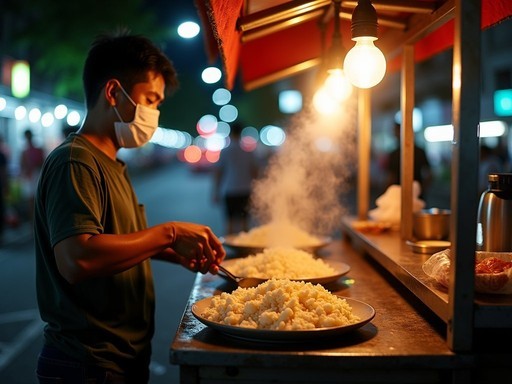
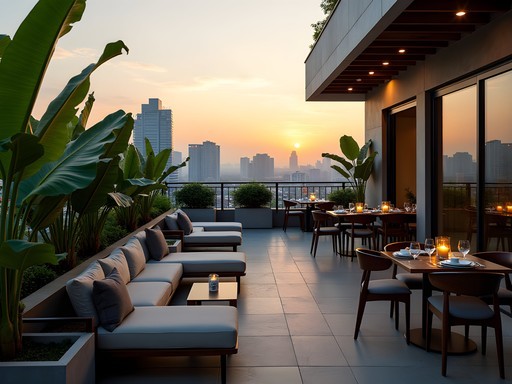
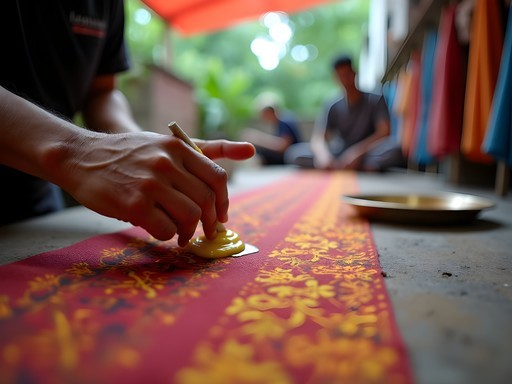
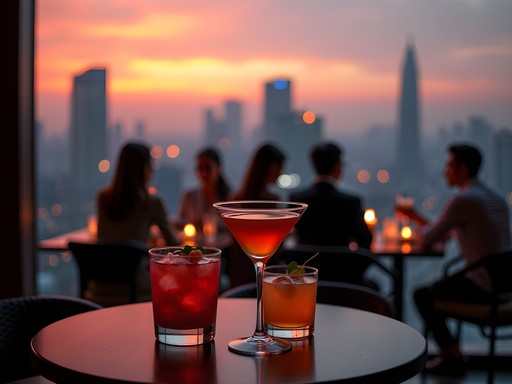
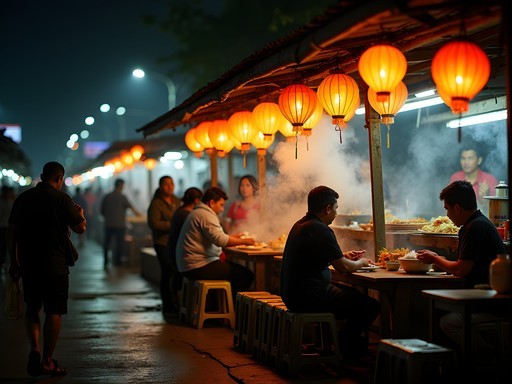
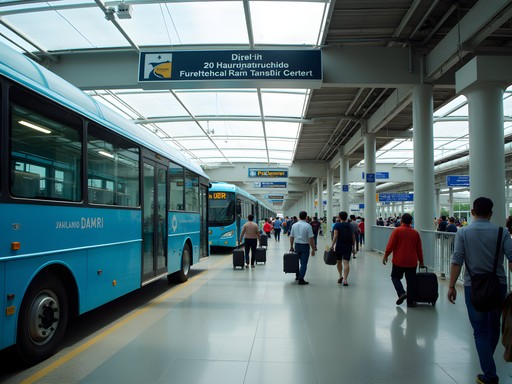


Comments
skyace
Great post! The Dutch colonial architecture in Jakarta is so underrated compared to other SE Asian cities.
islandzone
Totally agree! Did you check out Cafe Batavia while you were there? Amazing colonial vibe.
skyace
Yeah! Had a coffee there while watching the square. Prices are tourist-level but worth it for the atmosphere.
escapeclimber
Great post! Is it possible to see all these sites in one day? Or would you recommend splitting it up?
blueking
We did it in one day but it was exhausting in the heat. If you have time, split into two mornings - Kota Tua area one day and the religious buildings another.
Jean Wells
Raj, your perspective as an Australian of Indian heritage exploring Indonesia's Dutch colonial past creates a fascinating multi-layered narrative. Having lived in Asia for 25+ years, I'm particularly interested in how colonial architecture evolved differently across various Asian contexts. Jakarta's Dutch buildings show remarkable adaptation to tropical conditions compared to British colonial architecture in India or French colonial buildings in Vietnam. The fusion elements you mentioned - where European structural principles meet Indonesian aesthetic sensibilities - highlight the complex cultural exchange that occurred despite the problematic power dynamics of colonialism. I found similar architectural hybridity in Malacca and Penang. Did you notice how the spatial organization of these buildings often reflected Dutch attempts to maintain social hierarchies? The architecture itself becomes a physical manifestation of colonial ideology.
escapeclimber
Jean, that's such an interesting point about architecture reflecting social hierarchies. Any books you'd recommend on colonial architecture in Southeast Asia?
Jean Wells
I'd recommend 'Building Colonial Cities of God' by Thomas Brockelman and 'Architecture and Urbanism in the British Empire' edited by Bremner. Both examine how colonial powers used urban planning and architecture as tools of control and cultural expression.
blueking
Just got back from Jakarta last month and did this exact walk! The Kota Tua area was my favorite - those Dutch colonial buildings are incredible when you consider how old they are. I'd recommend starting super early to beat both the heat and crowds. We got to Fatahillah Square around 7:30am and had the place almost to ourselves for photos. Also worth checking out the puppet museum while you're there. The canals were... let's just say they don't smell great, but definitely give you that Amsterdam-in-the-tropics vibe the Dutch were going for. I used Jakarta Pocket Guide which had a decent map of the colonial district.
escapepro
How did you get around between sites? Is public transport good or should I plan on using taxis?
hikingvibes
Not OP but we used GoJek motorbike taxis - cheap and way faster than sitting in Jakarta traffic!
escapepro
Thanks! Never tried motorbike taxis before but sounds like a good option. Are they safe?
hikingvibes
Totally safe! They provide helmets and the app works just like Uber. Just hold on tight and enjoy the ride!
Casey Andersson
Raj, this brings back so many memories! I did a similar walking tour last year but splurged on a private guide who was an architecture student. Totally worth it for the in-depth history. The way Dutch colonial design adapted to tropical conditions is fascinating - those high ceilings and wide verandas were ingenious climate solutions. Did you get a chance to visit Museum Bahari in the old Dutch East India Company warehouses? The maritime exhibits really help connect how sea trade shaped the architectural development. I ended my day with cocktails at Café Batavia overlooking Fatahillah Square - perfect way to reflect on all that history!
blueking
Casey, which guide service did you use? Heading there in November and would love a recommendation!
Casey Andersson
I used Jakarta Walking Tours - ask for Budi if he's available. He's incredibly knowledgeable about architectural history. Their website lets you customize the tour focus.
hikingvibes
This walking tour looks amazing! Love how you captured the contrast between colonial architecture and modern Jakarta.
hikingway
Those canals remind me of Amsterdam! Never knew Jakarta had this side.
dreamseeker
Right? They actually called it the 'Batavia of the East' - basically trying to recreate Amsterdam in the tropics. Pretty wild when you think about it!
Robert Moreau
Raj, your post really resonates with me. I visited Jakarta last year and was similarly struck by the architectural contrasts. The Dutch colonial buildings tell such a complex story of Indonesia's past. I spent an afternoon at Café Batavia sipping coffee and imagining what life was like during colonial times. One tip for anyone going: the Jakarta History Museum in the old town hall is worth visiting, but go early to beat both the crowds and humidity. I found that using this guidebook helped put everything in historical context. Your perspective as an Australian with Indian heritage adds such an interesting dimension to the narrative!
hikingway
Café Batavia sounds amazing! Adding it to my list.
Robert Moreau
It's definitely worth a visit! The second floor has all these old photos that really transport you back in time.
dreamseeker
Wow! Your photos of those Dutch colonial buildings are incredible! I've been to Bali many times but never made it to Jakarta. Adding this to my list for next year!
Venture X
Premium card with 2X miles, $300 travel credit, Priority Pass